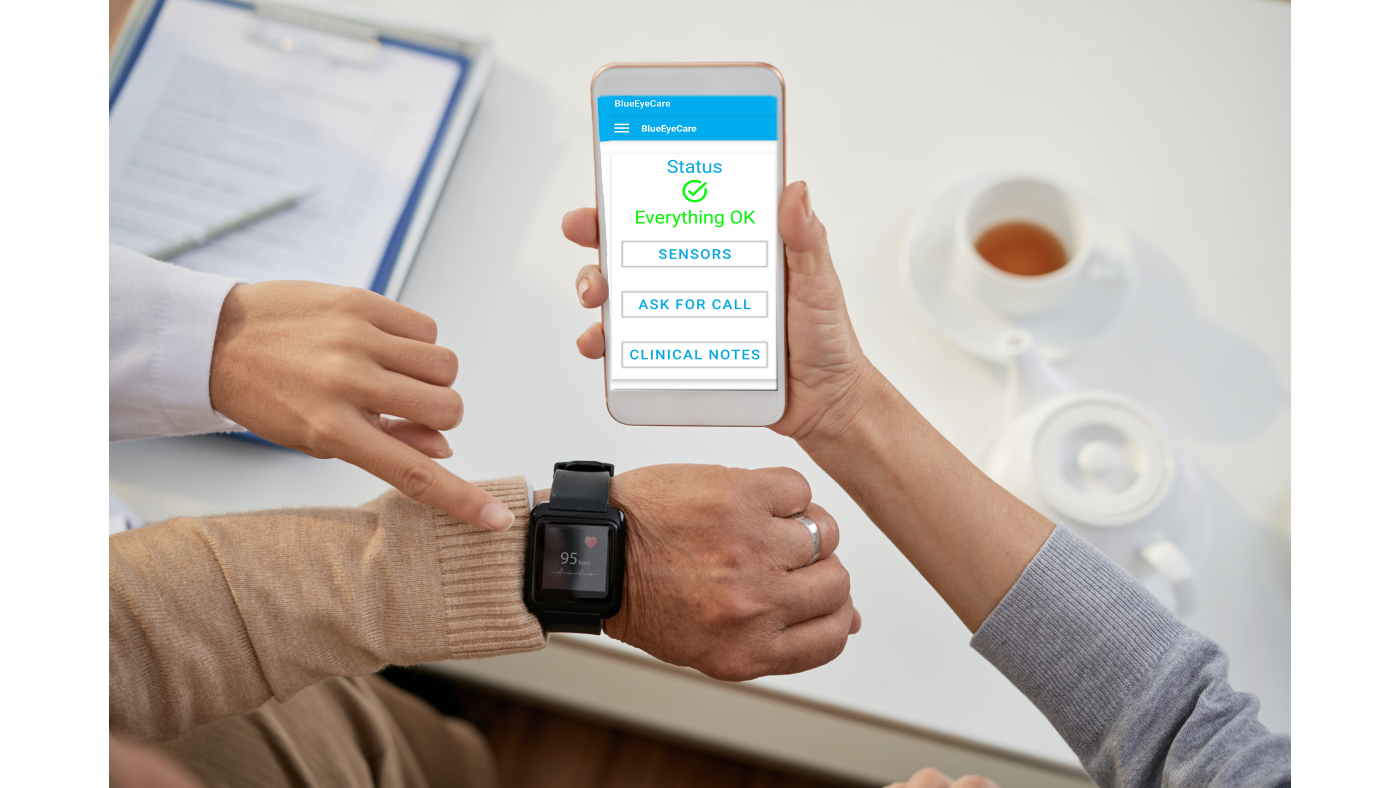Community care with BlueEye Virtual Ward
Community care can be more effectively delivered using a virtual ward solution for many types of patients. Virtual wards redefine the way community care services are delivered and experienced. By seamlessly extending hospital-level care to patients’ homes, virtual wards empower healthcare professionals to monitor, manage, and support a diverse range of medical needs within local communities. Patients with chronic conditions, post-surgery recovery, or complex medical requirements such as respiratory, cardio pulmonary, diabetes, dementia onset, contagious viruses can now receive expert care in the comfort of a familiar environment.
Virtual wards can provide for early hospital discharge and in hospital avoidance.
Hospital discharge can be facilitated a number of days early if the patient is well enough to go home but still needs monitoring. After hospitalization, patients can continue to receive medical attention through a virtual ward. Healthcare professionals can remotely track their recovery progress, manage medications, and address any concerns, preventing hospital readmissions and promoting a seamless transition to home-based care. A sensor kit can be recommended and delivered to the patient’s home. The patient is monitored an agreed number of times a day.
For example, a patient with mild COPD with an acute respiratory infection and on antibiotics is admitted from hospital to the virtual ward for monitoring. He is set up at home with temperature, SpO2 and respiratory sensors. Initially he feels worse and after a video consultation with the virtual ward team, his medication is increased and he improves thereafter. He is discharged when his antibiotics course is finished back to his GP care.
Hospital avoidance can be achieved where a GP can recommend a patient go directly to the virtual ward under the care of the specialist based in the virtual ward team. Patients with chronic conditions often require ongoing monitoring and care. Virtual wards facilitate regular check-ins and assessments, allowing healthcare providers to detect any changes in health status and provide necessary interventions, reducing the need for frequent hospital visits.
A hospital avoidance example is an elderly woman in a nursing home with congestive heart failure who has chest pain. The GP decides the patient is a suitable candidate for virtual ward in the nursing home. The virtual team orders the sensors blood pressure monitor, SpO2 sensor, ECG patch and the nursing home is given access to the BlueEye Care app. The symptoms are recorded by the nursing home staff, relayed and seen by the virtual ward monitoring team. The team advise that the patient is put on oxygen and her diuretics are increased. The NEWS score is monitored using virtual ward sensors and monitoring questionnaires. The patients reports improvement in breathlessness and her ECG shows her heart rate and blood pressure is normalising and her SpO2 has increased. She is discharged from the virtual ward and scheduled for review in the community heart failure clinic after 3 weeks.
This approach reduces the strain on hospital resources, enables early discharge and prevents unnecessary hospital admissions. Furthermore, virtual wards play a pivotal role in providing personalized care plans, empowering patients to actively participate in their own health management.
In essence, virtual wards bolster community care by seamlessly integrating medical expertise with patients’ daily lives, resulting in improved patient outcomes, reduced healthcare costs, and a more responsive and patient-centred healthcare system.
Key Benefits
Hospital level care for patient in the comfort of their own homes
Comfortable and familiar environment for patients during recovery
Enhanced patient empowerment as they actively participate in their own care
Increased job satisfaction – carers can work flexibly and provide one to one care
Multiple cost savings for both patients and healthcare systems
Continuous monitoring and quick interventions





